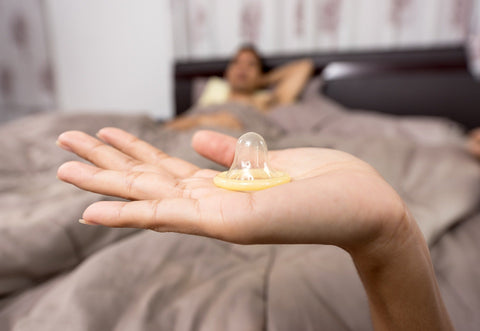Guest Article written by the FPA
(Sexual health charity FPA gives straightforward information and support on sexual health, sex and relationships to everyone in the UK. FPA educates, informs and supports people through our specialist sexual health programmes and counselling service, our websites and publications, our training for professionals and our public awareness campaigns.)
Anyone can get an STI
Lots of people still believe that you have to have lots of sexual partners to get an STI, which is simply not true. Anyone who is sexually active is at risk, even if they’ve only had sex once. STIs can be passed on through vaginal, anal or oral sex, by genital contact and through sharing sex toys.
STIs don’t discriminate by age either – young people and older people alike are at risk. Young people under 25 remain the age group most likely to be diagnosed with an STI but the rate of infection among people over 45 has been increasing in recent years.
When having sex Using a condom is the best way to help protect against STIs
Condoms are the only method of contraception that help protect against STIs. They won’t stop all infections (for example those passed on through skin-to-skin contact) but they are the best way to prevent most infections being passed on through sex.
A dental dam (a square piece of latex or polyurethane) can be used as a barrier between the mouth and vagina or anus during oral sex.
Talking about using condoms with a partner doesn’t always come easily, even if you’ve been together for a while. We’ve got some tips to get you started on our FPA Pleasure site, but in a nutshell the more you talk about sex, condoms and your relationship generally, the more comfortable it will feel.Most STIs can be easily treated but it’s best to act quickly
There is treatments for many STIs, but it is always better to avoid getting an infection in the first place, and it’s usually best if treatment is started as soon as possible.
Infections such as chlamydia and gonorrhoea require antibiotics, others may need creams, lotions or other treatment. Some viruses, such as genital herpes and HIV, never leave the body but treatment can help reduce the symptoms.
If left untreated, many STIs can be painful or uncomfortable and can be passed on to someone else. Some infections, such as chlamydia and gonorrhoea can cause damage to health and fertility if left untreated.
We’ve started to see cases where gonorrhoea, one of the most common STIs, is resistant to antibiotics, which makes it even more important that infections are not passed on.
Testing is free, quick and easy
All STI tests and treatments are free through the NHS at genitourinary medicine (GUM) or sexual health clinics. You can find your nearest service by using FPA’s Find a clinic tool. Many GPs offer free STI testing as well, although you may have to pay a prescription charge for any treatment.
In England, the National Chlamydia Screening Programme offers testing for young people under 25 at various locations around the country and also gives out free home testing kits from www.freetest.me
There is no need to fear STI tests. For both men and women they can often be as easy as giving a urine sample, or they might involve a visual examination to look for signs of infection, having blood taken, or using a swab on the genital area – the myth of having an umbrella-shaped instrument inserted really is just a myth!
If you’ve never had a test before it’s understandable you might be a bit nervous and if a swab is needed, some services will offer you the option of using it yourself. Remember, health professionals don’t look at an STI test as a reflection on your behaviour, but as a sensible health decision – and they do lots of tests every day.






